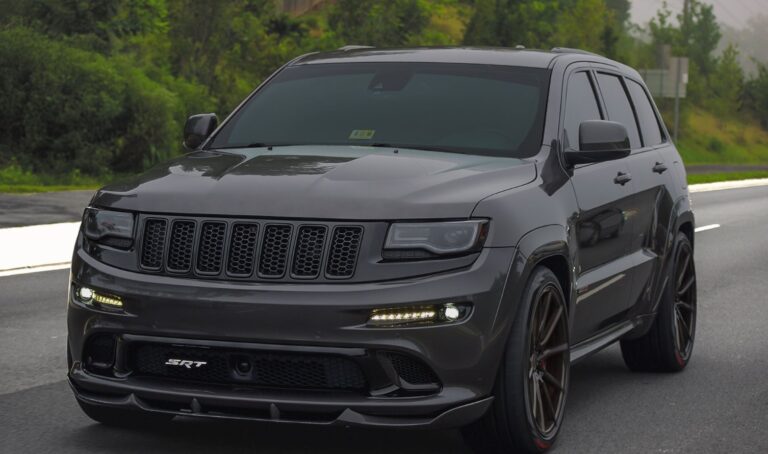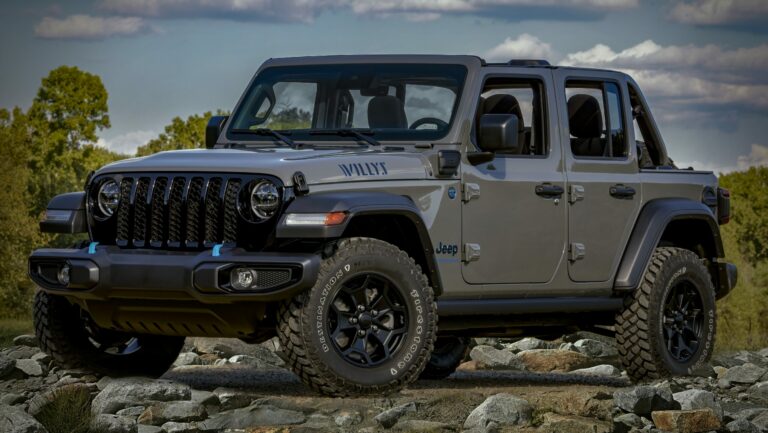1999 Jeep Cherokee Sport: The Enduring Icon of Off-Road Capability and Everyday Utility
1999 Jeep Cherokee Sport: The Enduring Icon of Off-Road Capability and Everyday Utility jeeps.truckstrend.com
In the vast landscape of automotive history, few vehicles achieve the legendary status of the Jeep Cherokee XJ. And within that storied lineage, the 1999 Jeep Cherokee Sport holds a special place. As one of the final models of the beloved XJ generation, the 1999 Cherokee Sport represents the culmination of nearly two decades of refinement, blending rugged simplicity with surprising daily drivability. It’s not just a vehicle; it’s an enduring icon, revered by off-road enthusiasts, practical commuters, and anyone who appreciates a no-nonsense, highly capable machine. This article delves deep into what makes the 1999 Jeep Cherokee Sport a timeless classic, exploring its strengths, characteristics, and why it continues to be a highly sought-after vehicle today.
The XJ Legacy: Why the 1999 Model Stands Out
1999 Jeep Cherokee Sport: The Enduring Icon of Off-Road Capability and Everyday Utility
The Jeep Cherokee XJ, introduced in 1984, revolutionized the SUV market. It pioneered the unibody construction for a compact SUV, a design choice that offered a lighter, more rigid chassis than traditional body-on-frame trucks, improving handling and fuel efficiency without sacrificing too much off-road prowess. By 1999, the XJ was in its twilight years, having undergone several minor facelifts and continuous improvements. This final iteration, before its discontinuation in North America in 2001, is often considered the most refined and reliable version of the breed.
The 1999 model year benefited from years of iterative development, with many of the early production kinks ironed out. It retained the classic, boxy silhouette that defines the XJ, a design that has aged remarkably well and contributes to its robust character. The Sport trim, in particular, was the quintessential XJ experience: no-frills, all-business, focusing on the core attributes that made the Cherokee famous. While other trims offered more creature comforts, the Sport delivered the essence of the Cherokee – raw capability and durability – at a more accessible price point.
Under the Hood: The Legendary 4.0L I6 Engine
At the heart of nearly every desirable 1999 Jeep Cherokee Sport lies the venerable 4.0-liter "Power Tech" inline-six engine. This engine is not merely powerful; it’s legendary for its bulletproof reliability, immense torque, and straightforward design, making it a favorite among mechanics and DIY enthusiasts alike. Producing a healthy 190 horsepower and a stout 225 lb-ft of torque, the 4.0L provides ample grunt for both highway cruising and navigating challenging off-road terrain. Its long-stroke design contributes to its low-end torque, which is crucial for crawling over obstacles.
Paired predominantly with the Aisin-Warner AW4 four-speed automatic transmission (manual transmissions were exceedingly rare in the 1999 Sport trim), this drivetrain combination is renowned for its durability. The AW4 is an incredibly robust unit, capable of handling significant abuse, especially when properly maintained. While fuel economy is not its strong suit (expect figures in the mid-to-high teens MPG), the sheer longevity and dependable performance of the 4.0L/AW4 combo more than compensate for its thirst. Regular oil changes, cooling system maintenance, and transmission fluid flushes are key to ensuring this powerhouse continues to run for hundreds of thousands of miles.
Off-Road Prowess and Drivetrain Options
The 1999 Jeep Cherokee Sport’s reputation as an off-road beast is well-earned. Its compact size, short wheelbase (101.4 inches), and excellent approach/departure angles make it incredibly agile on tight trails. Crucially, the XJ utilizes solid axles both front (Dana 30) and rear (typically a Chrysler 8.25 for 4.0L 4×4 models, or a Dana 35 for 2WD or smaller engines). Solid axles are preferred by off-roaders for their durability and articulation over uneven terrain, allowing the wheels to stay in contact with the ground longer.
Two primary transfer case options were available:

- Command-Trac (NP231): This is a part-time 4×4 system, offering 2WD High, 4WD High (for loose surfaces only), and 4WD Low. It’s robust and simple, ideal for serious off-roading.
- Selec-Trac (NP242): This system adds a "Full-Time 4WD" mode (similar to AWD), allowing it to be used on paved roads without driveline binding, in addition to the part-time 4WD modes. This makes the Selec-Trac a more versatile choice for varied conditions.
Regardless of the transfer case, the Cherokee Sport’s capability is undeniable. For those looking to enhance its off-road performance, a vast aftermarket exists, offering everything from modest lift kits and larger tires to heavy-duty bumpers, winches, and axle upgrades. Practical advice for off-roading includes equipping appropriate all-terrain or mud-terrain tires, carrying basic recovery gear (straps, shovel), and understanding the limits of your vehicle and your driving skills.
Interior and Comfort: Function Over Luxury
The interior of the 1999 Jeep Cherokee Sport embodies function over luxury. It’s a testament to utilitarian design, prioritizing durability and simplicity over opulent materials or high-tech gadgetry. The Sport trim typically came with durable cloth seats, manual windows (though power windows were an option), and a basic AM/FM radio. While sparse by modern standards, this simplicity means fewer things to break and easier repairs.
The cabin layout is straightforward and intuitive, with controls logically placed. Despite its compact exterior, the Cherokee offers a surprising amount of interior space, especially for front occupants. The rear seats are adequate for two adults, and the rear cargo area is capacious for its class, easily accessible via the large liftgate. With the rear seats folded down, the Cherokee transforms into a surprisingly capable cargo hauler.
Common interior issues include sagging headliners (a common XJ malady easily fixed with new fabric and adhesive), brittle plastics on door panels, and worn seat upholstery. However, these are often minor cosmetic flaws that don’t detract from the vehicle’s fundamental usability. For those accustomed to modern SUVs, the ride can feel a bit stiff and road noise more pronounced, but this is the trade-off for its rugged construction and off-road prowess.
Common Issues, Maintenance, and Modifications

While the 1999 Jeep Cherokee Sport is renowned for its reliability, like any aging vehicle, it has its common quirks and required maintenance:
Common Issues:
- Rust: Particularly in areas exposed to road salt, rust can be an issue on rocker panels, floorboards, and suspension mounting points. Thorough inspection is crucial.
- Cooling System: The 4.0L runs hot, making the cooling system a critical component. Radiator leaks, water pump failures, and thermostat issues are common.
- Oil Leaks: Power steering pump leaks, rear main seal leaks, and valve cover gasket leaks are typical for older 4.0L engines.
- Exhaust Manifold Cracks: The cast iron exhaust manifold can crack, leading to ticking noises. Aftermarket headers are a popular upgrade.
- Electrical Gremlins: Aging wiring can lead to issues with power windows, blower motors, and interior lights.
Maintenance Tips:
- Fluids, Fluids, Fluids: Regular changes of engine oil, transmission fluid, transfer case fluid, and differential fluids are paramount.
- Cooling System Overhaul: Consider proactively replacing the radiator, water pump, thermostat, and all hoses if the vehicle’s history is unknown.
- Steering and Suspension: Ball joints, tie rods, and control arm bushings wear out over time. Listen for clunks and inspect for play.
- Preventative Rust Treatment: For clean examples, consider undercoating or rust-proofing to extend its life.
Modifications:
The XJ’s robust design and vast aftermarket make it a prime candidate for modifications.
- Lift Kits: 2-3 inch lifts are popular for accommodating larger tires (30-31 inches) and improving ground clearance without significantly impacting daily drivability.
- Tires: All-terrain (A/T) or mud-terrain (M/T) tires are essential for off-road performance.
- Armor: Aftermarket bumpers, rock sliders, and skid plates protect vulnerable components.
- Recovery Gear: A winch, recovery straps, and a high-lift jack are invaluable for off-road adventures.
- Axle Upgrades: For extreme off-roading, upgrading to stronger axles (like a Ford 8.8 or Dana 44) or installing lockers can significantly boost capability.
Always research reputable brands and ensure modifications are done safely and correctly.
Is the 1999 Jeep Cherokee Sport Right for You?
The 1999 Jeep Cherokee Sport isn’t for everyone, but for the right person, it’s an incredibly rewarding vehicle.
It’s Ideal For:
- Off-Road Enthusiasts: Its legendary capability, compact size, and vast aftermarket make it a perfect trail rig.
- DIY Mechanics: Its simple design and abundant parts availability make it easy to work on.
- Budget-Conscious Buyers: A well-maintained XJ can be purchased for a reasonable price, offering incredible value.
- Those Seeking a Rugged Daily Driver: While not plush, its durability and practicality make it a dependable commuter.
- Collectors of Classic SUVs: The XJ’s iconic status ensures it will continue to be appreciated.
Pros:
- Legendary Reliability: Especially the 4.0L engine.
- Exceptional Off-Road Capability: A true go-anywhere machine.
- Vast Aftermarket Support: Endless options for upgrades and repairs.
- Simple Design: Easy to diagnose and fix issues.
- Classic, Timeless Looks: A design that never goes out of style.
- Strong Community: A passionate and helpful owner base.
Cons:
- Poor Fuel Economy: It’s a thirsty beast.
- Dated Safety Features: Lacks modern airbags, ABS (often optional), and electronic stability control.
- Ride Comfort: Can be stiff and noisy compared to modern SUVs.
- Rust Potential: Especially in northern climates.
- Lack of Modern Amenities: No touchscreens, advanced driver aids, etc.
Buying Advice: When purchasing a 1999 Cherokee Sport, a pre-purchase inspection by a trusted mechanic is highly recommended. Focus on rust, the condition of the 4.0L engine (look for leaks, strange noises), transmission shifting, and the transfer case. Maintenance records are a huge plus.
1999 Jeep Cherokee Sport Price Table
The price of a 1999 Jeep Cherokee Sport can vary wildly depending on its condition, mileage, location, and whether it’s 2WD or 4×4. Highly modified or meticulously restored examples can fetch premium prices.
| Condition | Price Range (USD) | Key Factors Influencing Price |
|---|---|---|
| Excellent | $8,000 – $20,000+ | Low mileage, no rust, pristine interior, meticulously maintained, often unmolested or professionally restored/upgraded. Could be a collector’s item or a highly desirable trail rig. |
| Good | $4,000 – $7,999 | Average mileage (150k-200k), minimal rust, clean interior with minor wear, all major components functional, good service history. Ready for daily driving or light modifications. |
| Fair | $2,000 – $3,999 | Higher mileage (200k+), some visible rust (rockers, floor), wear and tear on interior, minor mechanical issues (leaks, worn suspension components) that need addressing, but still runs and drives. |
| Poor | $500 – $1,999 | High mileage, significant rust (frame concerns possible), major mechanical issues (engine/transmission problems), extensive cosmetic damage, likely a project vehicle or parts donor. |
Note: These are approximate values and can fluctuate based on market demand, regional differences, and specific vehicle features (e.g., Selec-Trac vs. Command-Trac, specific options).
Frequently Asked Questions (FAQ)
Q: How reliable is the 4.0L engine in the 1999 Jeep Cherokee Sport?
A: The 4.0L inline-six is widely regarded as one of the most reliable engines ever built. With proper maintenance, it’s known to last 200,000, 300,000 miles, or even more.
Q: What’s the fuel economy like for a 1999 Cherokee Sport?
A: It’s not great by modern standards. Expect around 15-18 MPG combined, varying with driving style, tire size, and modifications.
Q: Can the 1999 Jeep Cherokee Sport really go off-road?
A: Absolutely. Its solid axles, compact size, and robust 4×4 systems make it an incredibly capable off-road vehicle, often outperforming many newer SUVs.
Q: What are the biggest problems to watch out for when buying one?
A: Rust (especially rocker panels and floorboards), cooling system issues, oil leaks (rear main seal, power steering), and exhaust manifold cracks are common. Always check for proper function of the 4×4 system.
Q: Is the 1999 Jeep Cherokee Sport safe by modern standards?
A: No. It lacks modern safety features like multiple airbags, ABS (often optional), traction control, and electronic stability control. Its crash test ratings are also dated. Drive defensively.
Q: Is it a good daily driver?
A: It can be. It’s reliable and practical, but the ride is firmer, interior noise is higher, and fuel economy is lower than modern crossovers. It’s a no-frills, utilitarian experience.
Q: What’s the difference between Command-Trac (NP231) and Selec-Trac (NP242)?
A: Command-Trac is a part-time 4×4 system for off-road or slippery conditions only. Selec-Trac offers a "Full-Time 4WD" mode that can be used on dry pavement, in addition to the part-time modes, making it more versatile.
Q: What’s the best lift kit for an XJ?
A: The "best" depends on your intended use. For daily driving with light to moderate off-roading, a 2-3 inch lift is generally recommended as it allows for larger tires (30-31 inches) without major modifications or compromising road manners too much.
Conclusion
The 1999 Jeep Cherokee Sport stands as a testament to intelligent, utilitarian design and enduring mechanical excellence. It embodies the spirit of adventure and self-reliance that defined the original SUV era. While it may lack the polished refinement and high-tech gadgetry of its modern counterparts, its rugged simplicity, legendary reliability, and unparalleled off-road capability have cemented its place as a true automotive icon. For those who appreciate a vehicle that prioritizes function over form, and offers a direct, engaging driving experience, the 1999 Jeep Cherokee Sport isn’t just a used car; it’s a timeless, capable, and infinitely modifiable companion ready for whatever adventure lies ahead. Its legacy continues to thrive, proving that some legends simply refuse to fade away.





